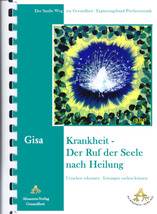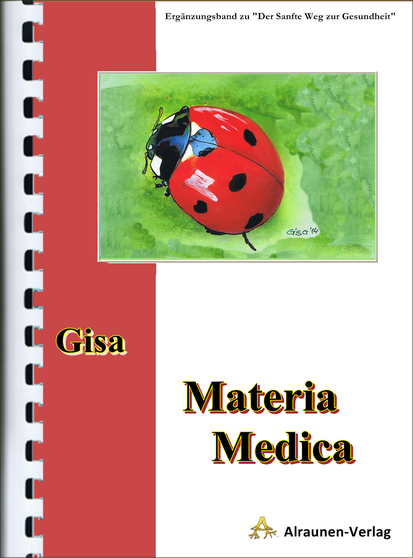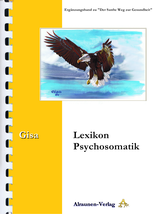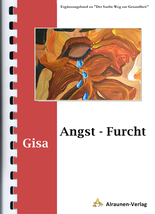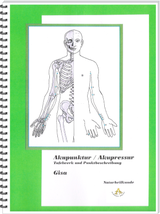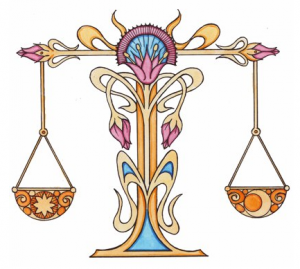
„The doctor’s first and most important task is to cure, and that is called medicine“
In persuit of similimum we’re studying homeopathy’s philosophy, materia medica and repertory, many different directions in homeopathy. But still, it someteimes happens that we remain stuck with a patient, not being able to understand him or feel empathy for him. We fell like our whole philosophy means nothing and we can’t understand why it is not right.
The relation between the doctor and his patient is a very complex relation. It includes many aspects which we know almost nothing about. The hole perception of that relation ends with our clasification of patient being „pleasent“ or „horrible“ and „hard to handle“.
Patinents with „terrible“ temperament are parts of our lives and most of the times, it’s their original nature, and it hadn’t changed when they came to the doctor. But also, there are some situations in which the doctor and the patient make such relation similar to the relation which patient has with certain people in his life, or has had. Also, that relation can sometimes remind us of some past experiences, both good and bad, from our personal lives. If both sides relate each other with good experiences and memories from the past, we’ll feel affection for each other and there won’t be almost any problems.
But, if the experiences were unpleasent, rough or painfull, the relation between the doctor and the patient won’t be built on mutual trust and the whole proces of healing will be thwarted.
In the „Organon“ Hahnemann talks about the philosophy of homeopatic healing, and points out what is dessease made of, how it manifests and how it should be treated. Pay atetntion to theese paragraphs:
§ 14
There is, in the interior of man, nothing morbid that is curable and no invisible morbid alteration that is curable which does no make itself known to the accurately observing physicians by means of morbid signs and symptoms – an arrangement in perfect conformity with the infinite goodness of the all-wise Preserver of human life.
§ 15
The affection of the morbidly deranged, spirit-like dynamis (vital force) that animates our body in the invisible interior, and the totality of the outwardly cognizable symptoms produced by it in the organism and representing the existing malady, constitue a whole; they are one and the same. The organism is indeed the material instrument of the life, but it is not conceivable without the animation imparted to it by the instinctively perceiving and regulating vital force.
***
So, if patient projects hystorical material or memories or expectations in this moment, neutral observer with enough patience will be able to recognize sympthoms. It is correct to consider that behavior as symptom, and to give it adecuate amount of importance. That proces of projection we call TRANSFER OF EMOTIONS.
In everyday’s life that’s the way in which we collect and classify our earliest experiences from childhood, which is completely normal and positive thing. But, sometimes we make a strong decision that some things which was right in the past, will reamain right and positive for us, and we stop asking ourselves weather they’ve lost some of their value in time. In that way, we’re creating a fixed behavior, and we’re having the same reactions over and over again. With new people and new situations we’re acting in old ways and we give them the same caracteristics as we gave the old ones. Furthermore, we expect that everything will end up in the same way it did before.
We can fix these points of view with the following rubrics in which the patient doesn’t hear what the homeopath is talking, because he has his own interpretation instead, based on previous experiences.
- MIND – DELUSIONS – voices – hearing – absent persons; of
- MIND – DELUSIONS – voices – hearing – dead people, of
- MIND – DELUSIONS – voices – hearing – distant
- MIND – DELUSIONS – voices – hearing – unpleasant voices about himself
- MIND – DELUSIONS – hearing – illusions of
- MIND – DELUSIONS – people – conversing with absent people
- MIND – DELUSIONS – messages; hears
- MIND – FANCIES – absorbed in
- HEARING – ILLUSIONS
The main characteristics of the TRANSFER OF EMOTIONS are:
- Transfer includes introjection of important people from the person’s past relations.
- Introjected material will be unapropriately projected in present relations.
- The patient goes through those emotions very intensively and he trys to relive the same scenario with the homeopathy. Most of the times, all of this happens unconsciously.
It is suposed that those transfers are the reflection of patient’s usual relations with people in his life
The characteristics of transfer reactions
Inadequacy:
There are a lot of situations in life in which one person doesn’t react appropriately to another person’s behavior.
- MIND – ANSWERING – foolish
- MIND – ANSWERING – imaginary questions
- MIND – ANSWERING – irrelevantly
- MIND – ANSWERING – questioned; does not answer, when
- MIND – ANSWERING – refusing to answer
- MIND – ANSWERING – unable to answer
- MIND – ANSWERING – evasively
Intensity:
Intensive emotional reactions are often the signs of transfer. If the homeopath’s behavior doesn’t provoke those reactions, the inadequacy of their intensity can be noticed easily.
- MIND – ANSWERING – abruptly
- MIND – ANSWERING – dictatorial
- MIND – ANSWERING – hesitating
- MIND – ANSWERING – loudly
- MIND – ANSWERING – offensive
- MIND – ANSWERING – rapidly
- MIND – ANSWERING – snappishly
- MIND – ANSWERING – unsatisfactory
Ambivalence:
All transfer reactions are ambivalent. One aspect of emotion stays unconscious or hidden until another one finds it’s way out. Some people find it easier to express gentle emotions like love for therapeut or sexual desires, in order to conceal their doubts and unfriendly attitude, or vice versa.
- MIND – SPEECH – affected
- MIND – AFFECTATION
- MIND – AFFECTATION – words; in
- MIND – AFFECTATION – gestures and acts; in
- MIND – HIDING – himself
- MIND – HIDING – himself – running away; and
- MIND – INSECURITY; mental – hiding it; but is
- MIND – DESIRES – suppressing his desires
- MIND – REFLECTING – inability to reflect
Moodiness:
Transfer reactions are unstable and capricious. Patient’s feelings for homeopath can turn around very quickly and unexpectedly. It often happens that patient’s assumptions or fantasies about the meaning of his doctor’s behavior lead to sudden change in his attitude towards homeopat during the interview or after it.
- MIND – CAPRICIOUSNESS
- MIND – CAPRICIOUSNESS – rejecting the things for which he has been longing; when offered, he is
- MIND – OFFENDED, easily
- MIND – IRRESOLUTION
- MIND – INCONSTANCY
- MIND – MOOD – changeable
- MIND – IMPULSIVE
- MIND – IRRATIONAL
- MIND – REPROACHING others
- MIND – REPROACHING others – doctor; the
- MIND – QUARRELSOME
We can notice one of those situations during the planning of the next meeting. Sometimes, if you arrange next meeting later than expected, patient could see it as your attention to wash your hands of him.
- MIND – FORSAKEN feeling
- MIND – DELUSIONS – alone, being
- MIND – FORSAKEN feeling – isolation; sensation of
- MIND – DELUSIONS – forsaken; is
- MIND – DELUSIONS – friendless, he is
- MIND – DELUSIONS – neglected – he or she is neglected
- MIND – DELUSIONS – betrayed; that she is
- MIND – HELPLESSNESS; feeling of
- MIND – INSECURITY; mental
- MIND – CAUTIOUS
- MIND – SUSPICIOUS
Unexpected change of feelings could be the consequence of homeopath’s mistakes as well, and he has to bare it in mind all the time. No matter what is the reason, those sudden changes can turn into resistance and dissatisfaction, and they should be clarified.
How to recognize transfer
Trasfer can happen for many different reasons and in a lot of different ways, but the common thing for all of them is that you’ll always have the feeling of disharmony in the way that patient acts with you. You won’t be able to always understand his reactions towards you. You’ll realise that nobody else can understand the world from the „patient with transfer“-s point of view.
The best way is to try to see what’s really going on, and to ask him/her to try to explain his thoughts and feelings with facts. Although his proofs for this kind of belief aren’t related to anything that you could identify, at least consciously, he is still holding tightly to the picture of you that he has, and it’s a great probability that you have the transfer reaction.
Also, you have to be one self-concious person with clear thoughts to be able to identify transfer precisely, and that’s a hard thing to do, mostly because we are also playing the parts in that relation. A good way to notice the transfer in which we participate is to be clear about our own history, especially when it comest to relationships with other people. We should be able to notice if there are some patterns of our lives. Do we always choose friends with whom we create similar relationships? When it comes to love, do we always choose partners who treat us in the same ways?
There are four types of transfer you should recognize:
1. Previous experiences or aspects of people in the past, even the whole person from the past, who projects on the homeopath. Patient could see the homeopath as a carring, unfriendly, critical, leaving person, or a person with any other caracteristic whitch the client had experiences in the past.
- MIND – DELUSIONS – specters, ghosts, spirits
- MIND – FEAR – ghosts, of
In this context, the word ghost refers to a person who is no longer present at this moment, but his presence is still felt. It is possible that the patient still feels the fear when thinking about the person from the past, and the homeopath could be the reason for that because of his behaviour or the way he looks like.
2. Patient’s estranged aspects or characteristics are projected on the homeopath – for example, patient who doesn’t recognize or manifest his own anger, feels as if homeopath is angry with him.
- MIND – UNCONSCIOUSNESS – mental insensibility
- MIND – UNCONSCIOUSNESS – remains fixed in one spot
- MIND – UNCONSCIOUSNESS – semi-consciousness
- MIND – EMOTIONS – predominated by the intellect
3. Patient’s wishes, hopes or primitive desires brought in the relation – for example, homeopath is idealised or seen as a perfect mother or father which client never had, or as a person who leaves the impression of safety and suportance. The patient will often use these words „ I finally feel like someone is there for me“ or „I feel that you can understand me, that you’re there for me“, or „you brought me back to life“, or „I feel so safe by your side“.
- MIND – DELUSIONS – angels, seeing
- MIND – DELUSIONS – people – behind him; someone is
- MIND – DELUSIONS – beautiful – atmosphere, in – himself in a beautiful atmosphere; he finds
- MIND – DELUSIONS – building stones, appearance of
- MIND – DELUSIONS – caressed on head by someone
- MIND – DELUSIONS – charmed and cannot break the spell
- MIND – DELUSIONS – lifted; she was being
- MIND – DELUSIONS – melodies, mostly from the past, come into her mind
- MIND – DELUSIONS – person – room; another person is in the
- MIND – DELUSIONS – people – seeing people
- MIND – DELUSIONS – person – present; someone is
- MIND – DELUSIONS – smoothed by a delicate hand; she were
- MIND – DELUSIONS – stimulant; had taken a
- MIND – DELUSIONS – friend – surrounded by friends; being
4. Beliefs, attitudes or assumptions are being trasfered in relation – for example, all man/woman are distanced and careless towards me, or „no one cares for me“
- MIND – DELUSIONS – neglected – he or she is neglected
- MIND – DELUSIONS – alone, being – belong to anyone; she did not
- MIND – DELUSIONS – alone, being – world; alone in the
- MIND – DELUSIONS – alone, being – always alone; she is
- MIND – DELUSIONS – distances; of
- MIND – DELUSIONS – enlarged – distances are
- MIND – DELUSIONS – army passed him in the street; a silent – walking; while
Army – the organisation in which all members act as one, without the individuality, free will or iniciative, uniformed and in abeyance. No individual attitudes. Same minded people.
It’s important to know that every transfer is co-created phenomenon and it doesn’t exsist on it’s own appart from everything else. Usually, the presence of our aspects helps in activating or initiating the transfer. The way we behave, think or feel when we’re with patients make it’s influence on their attitudes towards us. Their attitude, furthermore, have it’s influence on our answers towards them. And so on…
How to deal with the transfer
We’re homeopaths, not psychologists and neither we have enough knowledge or experience for dealing with the transfer, nor it’s our bussines. But still, it’s important to be able to identify it for a few reasons
- When Haneman in his „Organon“ spoke about obsticles for healing, he numbered physical obsticles as conditions of living and working which inveritably worsen the illness and make the process of healing harder or even impossible. There has been two and a half senturies since Hanemans’s time, and many sciences has developed, an the psychology among them. Acording to that, it would be very useful to think about psychologycal obsticles when we think about healing of patients, and the transfer of emotions could be of a great importance.
- That type of relation, especially unconscious, can lead to many missunderstandings between homeopath and his patient, and the process of healing could become harder.
- If we understand what’s going on, those information could be very important as mind symptoms, and they will lead us to the similimum with more certainty.
- With fragile and traumatized patients, positive transfer could be useful in creating trustful relations, therefore it shouldn’t be stopped at the begining, but when we come to the point where patient becomes more self-confident (after he starts taking a remedy and working on improoving his own skills), we should make him believe that his responsibility and devotion has the most influence on his own healing.
As a common rule, it’s useful to help a patient in growing the feeling that he can, and he should be able to talk loud about his reactions towards you, even if they seem irrational or problematic.
Erotic transfer
When patient falls in love with his doctor, it’s almost always phenomenon of transfer, or it’s based on closeness of relation between two of them in which patient gets a lot of understanding and suprtation. The biggest problem is when the transfer is erotical or sexual. Will be good to find a way to create an atmosphere open for those kinds of topics. In those moments, it’s necessary to make a border line in your relation according to etycal codex whitch you made commitment to. You should be aware of theese warnings:
- According to researches sexual relationship between the client/patient and therapist/doctor is almost always traumatizing and abusive on the long terms, even if the relationship starts after the end of the therapy.
- Sometimes the doctor can feel embarrassed or unpleasent when the client is talking about his/her feelings towards him/her.
- Sexuality is often presented in a wrong way, as a need for sympathy, love and afirmation
- Clients with history of sexual abuse could try to push the limits by unconsciously behaving the same way their torturer behaved with them.
- Be careful with your own sexuality mostly because it could be unconscious.
- Our erotic countertransferal feelings could appear, but they should be talked about on supervision or therapy. That could be a rich source of understanding. But still, it would be great if you can keep them for yourself, and not tell the patient about them.
Countertransfer
Usual definition tells that the countertransfer is your reply to the transfer of client/patient. That is the opportunity to make conscious some unconscious parts of your personality, and to spread your consciousness.
You should carry in mind that the relation homeopath-patient is usually completely normal and healthy, and reactions are in accordance to what is happening here and now, and they are proportional. Those reactions we won’t call transfer and countertransfer.
If the transfer and/or countertransfer becomes too intensive and starts to distract your relation with patient, rational and responsible solution would be to carefully make your patient know that you’re no longer able to work with him, and recommend him another homeopath who you think would be able to help him better. In that case, you’re not a looser, and you won’t loose your patient’s respect. Moreover, he’ll probably apreciate your sincerity, and you can’t help him anymore. The only difference is how will you two end your relation, and what feelings will you carry from it.
In practice there are a lot of situations, and the remedy will depend on the patients need which stands behind the transfer. The words of Dr. Kent „ The signs and sympthoms which manifests are the real impression that the nature of the illness leaves, they create ouside look of the inside nature of the illness“ we can and we should think about, when we talk about transfer of emotions. If we know with certainty what caused the illness,that’s great, but it happens rarely. If we focus on what’s expected and present, we won’t break homeopathic principles. Dr. Kent says clearly in his homeopathic philosophy lessons that there is always one disease that travels through every person’s body, and that the change of symptoms doesn’t mean the change of remedie, it means the route by which the disease progress. Those sympthoms „here“ and „now“ are visible and reliable, and they give more correct picture of the disease then all of our speculations like „when somethying started, why and how, and how it looked like in the past“, could ever do.
~~~~~~~~~~~~~~~~~~~~~~~~~~~~~~~~~~~
Literary: Phil Joyce & Charlotte Sills – “Skills in Gestalt Counselling & Psychotherapy James Tyler Kent – „Lectures of hoemopathic materia medica” Samuel Hahnemann – “Organon” Sehgal Brothers – “Rediscovery of homeopathy” Dr. Frederik Schroyens – „Synthesis, Repertorium Homeopathicum Syntheticum“ , edition 9.0 and 8.1

